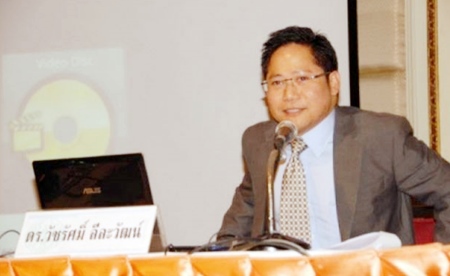BANGKOK, June 27 – Global foreign direct investment (FDI) will rise to US$1.45 trillion this year with developing countries attracting 52 per cent of capital flows, the International Institute for Trade and Development (ITD) announced today.
ITD deputy director Watcharas Leelawath quoted the latest the United Nations Conference on Trade and Development (UNCTAD) World Investment Report as saying this year’s global FDI will be slightly higher than last year’s figure at US$1.35 trillion but 18 per cent lower than in 2011.

Developing countries remained investment magnets, representing 52 per cent of total global FDI, in 2012 – the first year since the data began to be measured when developing countries’ FDI surpassed that of developed countries, he said.
In 2011, FDI in developing countries dropped 4 per cent while it plunged 32 per cent in developed countries given the economic crisis in Europe, the US and Japan.
Direct foreign investment in all regions worldwide has declined except for Southeast Asia, which enjoyed a 2 per cent rise with foreign investors eyeing Cambodia, Vietnam and Myanmar for investment in labour-intensive industries, he said.
FDI in Thailand saw a 10.6 per cent growth mostly from Japan’s auto and electrical appliance industries while Thai investment abroad increased by 44.9 per cent, at a total value of US$11 billion in 2012 from US$8 billion in 2011.
Thailand’s investment in Southeast Asia mostly involves light industries such as food, agriculture produce and textile.
Mr Watcharas said the trend of global FDI is growing with a forecast value of US$1.6 trillion in 2014 and US$1.8 trillion in 2015 after the US economic revival.
However, he warned of a possible recurrence of economic slowdown and inconsistent policies which may affect investors’ sentiment and their direct investment.
UNCTAD has urged developing countries to develop their efficiency and manufacturing technology for better pricing and higher revenue, he said.
“Investment by developed countries have boosted employment and the transfer of technology to developing countries but the added value is only 1 per cent, which is minimal,” Mr Watcharas said.
“Developing countries must upgrade their manufacturing efficiency and labour skills to be integrated in the production supply chain,” he said.




